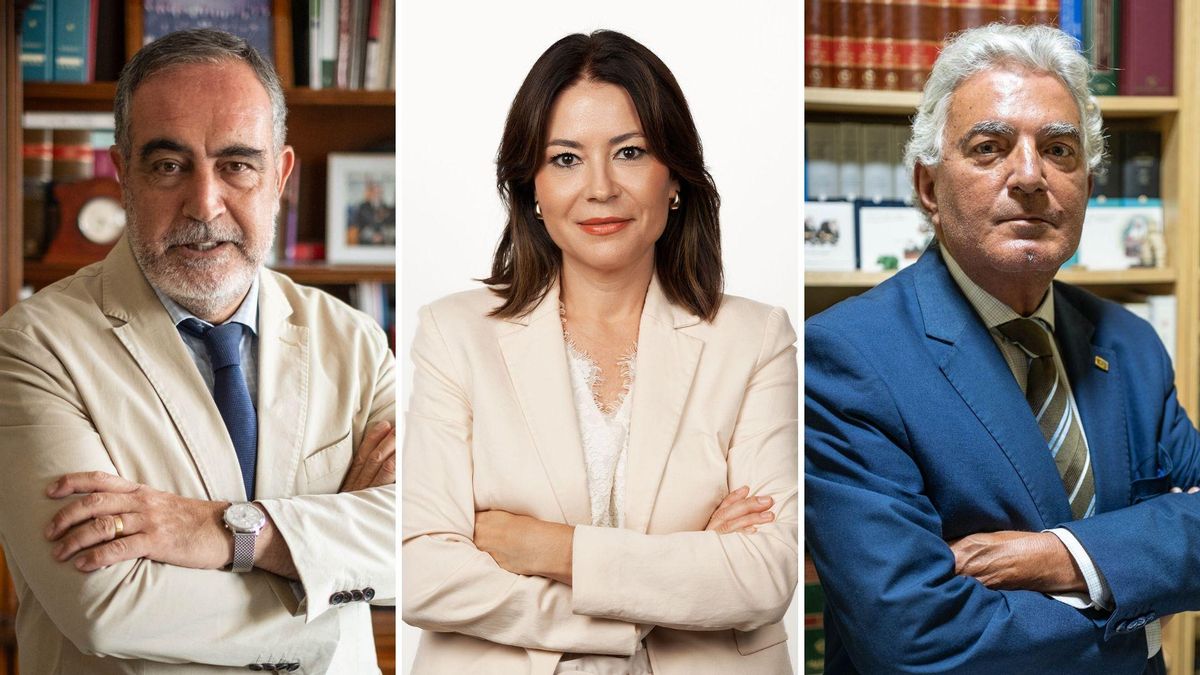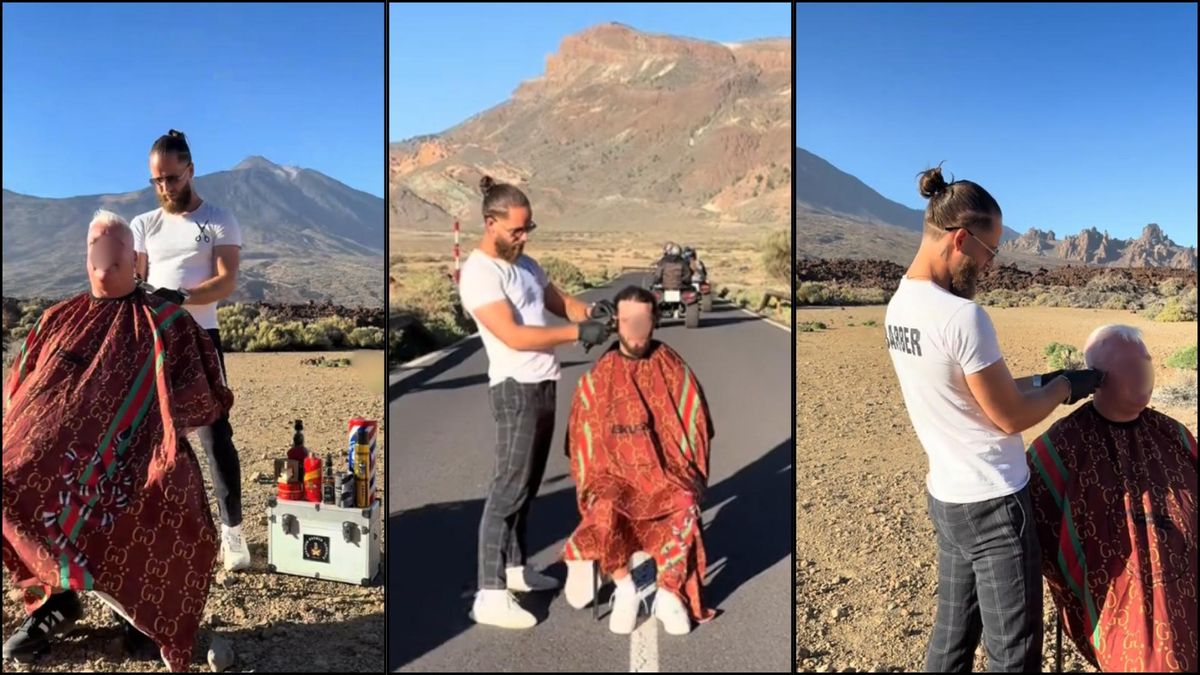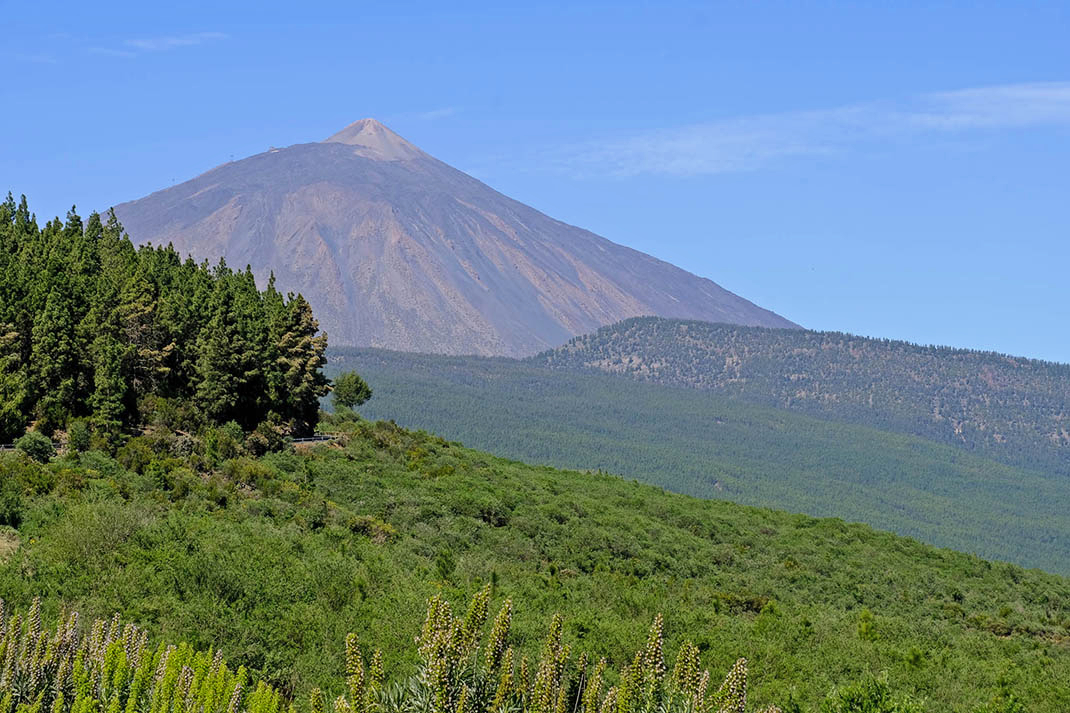- – Many people now claim that the Teide is a danger, but you assert that Teide is not the danger. Am I mistaken?
- – So, can we say we can be at ease?
- – And its appearance has continuously changed.
- – What will future eruptions look like?
- – Juan Carlos, what is the state of volcanological research in Spain?
- – There are still controversial debates.
- – Do you miss being actively involved? Are you still researching?
- – The global scientific community places you very, very high. You must feel proud.
- – Is the fear of imminent eruptions in Tenerife justified?
- – So, we need to be prepared.
- – There are differences.
- – Prevention seems crucial, doesn’t it?
- – What do you think about some television series that erase the Canaries from the map? They seem apocalyptic to me.
- – Where does the origin of this apocalyptic legend lie?
- – Well, the Cumbre Vieja Volcano has erupted, and that did not happen.
- – What lies behind all this?
- – Did you expect an eruption as violent as that of Cumbre Vieja?
- – Should we feel reassured by the work of IGN and Involcán?
- – Are we learning from past volcanoes? Are we growing accustomed to living with them?
Professor and researcher Juan Carlos Carracedo was born in Miranda de Ebro (Burgos) in 1941. “This precision,” he tells me, “is merely circumstantial; my mother was from La Rioja, from Sajazarra, and I must have caused some difficulty at birth because she was taken to the hospital in Miranda to give birth there. This perfectly illustrates that the place of birth has only a bureaucratic significance.” Perhaps with his words, he means to convey that he feels Canarian and from Tenerife. “While strolling through the Plaza del Charco in Puerto de la Cruz, I met an extraordinary Irish woman, Pauline Agnew, in the early 1960s. From that encounter sprang a marriage that lasted 55 years, resulting in seven children, nine grandchildren, and now five great-grandchildren. I am a fortunate great-grandfather. Now, as a widower, I am comforted by my large family, most of whom live just a stone’s throw from my home in Guamasa.” Professor Carracedo, who ranks among the world’s top scientists according to the prestigious Stanford University (USA), adds, “I have more than fulfilled the proverb of, at least, planting a tree, having a child, and writing a book.” The rest of his biography revolves around an exhausting scientific career, his extensive work at the Spanish National Research Council studying the volcanoes of the Canary Islands, and he was fortunate, as I was, to experience—and Juan Carlos to study—the eruption of Teneguía in 1971 and the most recent eruption of Cumbre Vieja in 2021.
– Many people now claim that the Teide is a danger, but you assert that Teide is not the danger. Am I mistaken?
“Teide is an active volcano, which does carry a risk that we cannot dismiss. However, the scientific knowledge about its evolution, based on radiometric dating (K/Ar and 14C) and the geochemistry of its magmas, suggests that it is unlikely to experience a summit eruption in the future, such as the last medieval eruption of the black lavas that formed its characteristic cone.”
– So, can we say we can be at ease?
“Teide began forming nested within the Caldera de Las Cañadas, resulting from the collapse of a previous large volcano: Las Cañadas. Initially, it was built up with dense basaltic magmas, making its ascent to the crater difficult. For about 30,000 years, only the lighter and more evolved phonolitic magmas were able to reach the summit. This volcano, the Old Teide, already known to the Guanches, was lower and flatter, with a wide crater at its peak.”
– And its appearance has continuously changed.
“For thousands of years it emitted phonolitic lavas until these became too heavy, causing eruptions around its base and forming peripheral domes like Montaña Blanca, Las Abejeras, Pico Cabras, and Bocas de Doña María. Ultimately, the volcano managed to emit a remnant of lighter obsidian phonolites, resulting in the black lavas that shaped the current Teide. Therefore, given its present height, it seems reasonable to conclude that a summit eruption is highly improbable.”
– What will future eruptions look like?
“The most likely will be similar to the recent eruptions in La Palma, of the strombolian type, which are less explosive and dangerous, expected to occur along one of the two ridges of Tenerife: the northwest ridge from Teide to Teno or the northeast ridge from Teide to Anaga. While less dangerous in themselves, they represent a high risk due to the dense population and infrastructure in those areas.”
– Juan Carlos, what is the state of volcanological research in Spain?
“It is never enough. Given my age, I have witnessed and contributed to a significant leap forward. When I started my thesis in the early 70s, Atlantis was still seriously considered as the origin of the Canaries, which were thought to be the peaks of the highest mountains from the submerged continent. The work of hundreds of scientists worldwide has propelled geological knowledge of the Archipelago to its current level. There remains much to discover.”
– There are still controversial debates.
“The fascinating scientific debate remains alive. When I started studying the Canaries, there were no absolute ages. The first dates published in 1972 by American scientists marked a decisive change. But that was only the beginning. Hundreds of subsequent datings have clarified the origin and geological evolution of the Canaries in a long-lasting scientific debate that effectively remains active. Furthermore, significant progress has been made regarding the study and monitoring of active volcanism, fundamentally based on the essential and overdue deployment of instrumental networks across all the islands, which were virtually non-existent just a few years ago.”
– Do you miss being actively involved? Are you still researching?
“It’s easy to answer that. I don’t find much difference compared to when I was officially active, except for a gratifying absence of bureaucracy. Today, the technological means are so powerful that one can be in real-time contact with scientists from all over the world, face to face. And AI opens boundless perspectives in this regard.”
– The global scientific community places you very, very high. You must feel proud.
“I assume you are referring to my inclusion in the World’s Top 2% Scientists List, compiled annually by Stanford University in California, the intellectual hub of Silicon Valley. This prestigious list identifies the most prominent researchers who represent the top 2% of all scientists worldwide. I take pride in the assessment system employed, which considers not only the number of publications but also the impact my work has had within the scientific community. This is measured through citations of work in publications worldwide. If you get cited, it means your contribution is valued and considered worthy of mention. What better recognition is there?”
– Is the fear of imminent eruptions in Tenerife justified?
“Certainly, and that is why it is essential to take appropriate measures: studying volcanoes, effective monitoring with the necessary density of instrumental networks, and planning in advance for potential eruptive events.”
– So, we need to be prepared.
“Let us start from two irrefutable facts. Among the most predictable geological disasters in Tenerife are earthquakes and volcanic eruptions. The former can be detected but not anticipated. Eruptions, on the other hand, can be detected, and while they are not predictable, they are amenable to early detection before the event occurs.”
– There are differences.
“An earthquake involves the sudden release of large accumulated stresses that, in themselves, show no prior evidence. In contrast, an eruption involves processes that manifest before it becomes visible, all produced by magma violently rising, breaking rocks on its way to the surface. These processes mainly result in ground deformation (bulging), increased soil temperature, gas emissions, and a heightened frequency of increasingly shallow earthquakes.”
– Prevention seems crucial, doesn’t it?
“It is necessary to develop action protocols for when an eruption is localized, even with sufficient advance notice. The Copernicus programme, through the Sentinel satellites, detects many of these manifestations. These action guidelines must consider not only the characteristics of the impending eruptive event but also the effects it could have on the population and infrastructure, as well as the availability of appropriate resources.”
– What do you think about some television series that erase the Canaries from the map? They seem apocalyptic to me.
“Apocalyptic announcements can be seen as a form of low-level geological terrorism, as they are based on unjustified and unfounded theories. Without a doubt, they cause significant harm to science due to their inconsistency and to society by generating unnecessary anxieties, in addition to damaging the image of the Canaries, particularly concerning a vital economic activity like tourism.”
– Where does the origin of this apocalyptic legend lie?
“There I go. An illustrative example of what we are discussing is the unfortunate hypothesis that suggested the flank of Cumbre Vieja, on La Palma, would collapse during an eruption, causing a gigantic tsunami that would reach the Atlantic coast of the United States, with waves tens of meters high. This absurdity was disseminated by the BBC in their Horizon programme, known for its excellent production.”
– Well, the Cumbre Vieja Volcano has erupted, and that did not happen.
“It is unnecessary to say that such an exaggeration lacks scientific foundation. After the BBC documentary aired in 2004, the eruption of 2021 occurred without any of that happening, as expected.”
– What lies behind all this?
“The explanation is rather mean: money. The extensive funding received by this horror “thriller,” both for the research programme and the channel producing the report on the La Palma tsunami, came from insurance companies like Benfield Greig Group, the third-largest reinsurance company in the world, specializing in natural risks. The script was chilling: giant waves, skyscrapers falling, nuclear plants exploding (no less than seven nuclear power plants like Fukushima, located on the American Atlantic coast). However, all this resembled more a science fiction movie than a report based on scientific rigor. Nevertheless, the vast majority of scientists adhere to ethical standards.”
– Did you expect an eruption as violent as that of Cumbre Vieja?
“I thought it possible, although nothing can be predicted regarding historical volcanism in La Palma. A characteristic of the ridges is that eruptions can occur with similar probabilities at any point along their crest. However, their effects depend precisely on their location, as these will be more severe the further north the eruptive centre is situated. This is illustrated by the virtually harmless eruption of 1971, to the south, contrasted with that of 2021, situated far north of the ridge.”
– Should we feel reassured by the work of IGN and Involcán?
“The work of IGN has improved. I had old and well-known disagreements with the Institute. Today it develops new guidelines and ideas more in line with the nature of these islands. It stands at an appropriate level. As for Involcán, we have been discussing science. I do not wish to enter politics.”
– Are we learning from past volcanoes? Are we growing accustomed to living with them?
“Every eruption is an intensive course in volcanology, both for scientists and for all those who, in one way or another, are related to the knowledge and management of eruptive risks. It is not about drills, which can also be useful, but real tests in which human lives are at stake.”











